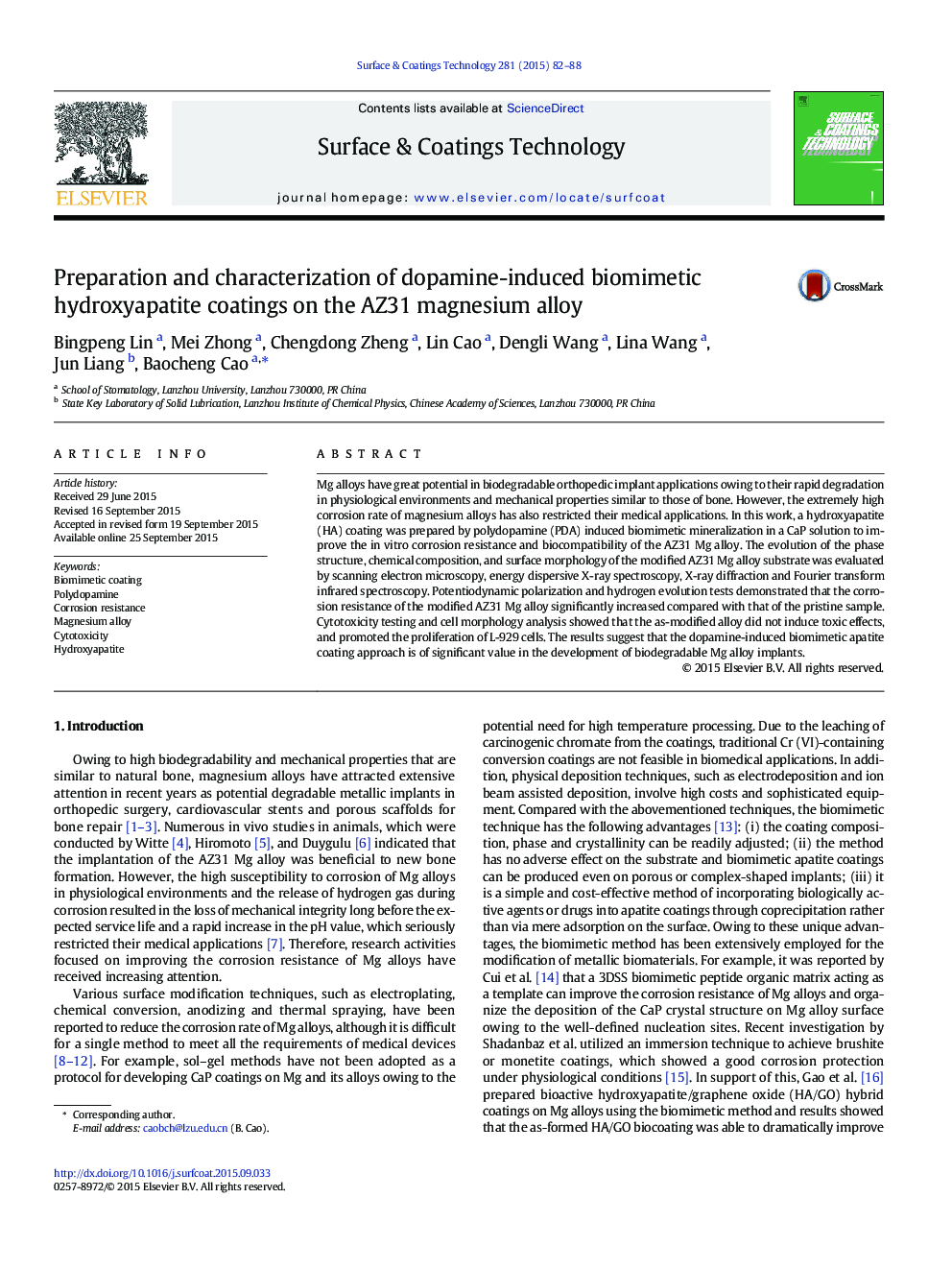| Article ID | Journal | Published Year | Pages | File Type |
|---|---|---|---|---|
| 8025884 | Surface and Coatings Technology | 2015 | 7 Pages |
Abstract
Mg alloys have great potential in biodegradable orthopedic implant applications owing to their rapid degradation in physiological environments and mechanical properties similar to those of bone. However, the extremely high corrosion rate of magnesium alloys has also restricted their medical applications. In this work, a hydroxyapatite (HA) coating was prepared by polydopamine (PDA) induced biomimetic mineralization in a CaP solution to improve the in vitro corrosion resistance and biocompatibility of the AZ31 Mg alloy. The evolution of the phase structure, chemical composition, and surface morphology of the modified AZ31 Mg alloy substrate was evaluated by scanning electron microscopy, energy dispersive X-ray spectroscopy, X-ray diffraction and Fourier transform infrared spectroscopy. Potentiodynamic polarization and hydrogen evolution tests demonstrated that the corrosion resistance of the modified AZ31 Mg alloy significantly increased compared with that of the pristine sample. Cytotoxicity testing and cell morphology analysis showed that the as-modified alloy did not induce toxic effects, and promoted the proliferation of L-929 cells. The results suggest that the dopamine-induced biomimetic apatite coating approach is of significant value in the development of biodegradable Mg alloy implants.
Keywords
Related Topics
Physical Sciences and Engineering
Materials Science
Nanotechnology
Authors
Bingpeng Lin, Mei Zhong, Chengdong Zheng, Lin Cao, Dengli Wang, Lina Wang, Jun Liang, Baocheng Cao,
